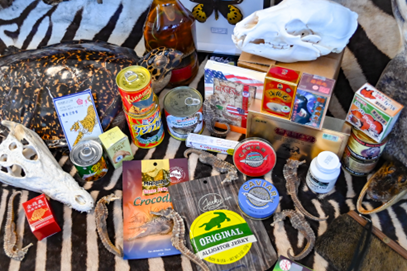Protected animal and plant items
Some countries require a Convention on International Trade in Endangered Species (CITES) permit to bring certain animal and plant items into the country. New Zealand is one of those countries. A CITES permit allows you to move protected species across international borders. This includes items you bring back to New Zealand from overseas. Please allow plenty of time if you need to get a permit.
CITES is designed to regulate trade in endangered, threatened, or exploited species. This includes more than 40,000 species of animals and plants.
Note: It is the responsibility of the importer to ensure that items are accompanied by any permits required under CITES.
Items arriving in New Zealand without the relevant CITES permits may be seized and you could be fined.
CITES covers alive or dead plants and animals, and any products made from them. This includes certain souvenirs.
The CITES items most commonly seized or surrendered at the New Zealand border include:
- Corals and clams
- Crocodile and alligator products (e.g. jerky, leather, teeth, bone, taxidermy)
- American ginseng root and traditional medicines containing dendrobium and saussurea costus
A permit is also required for the items below. Note: this is not a complete or comprehensive list – if you have any doubts about whether your item requires a permit, contact the Department of Conservation (DOC) at [email protected] for more information.
- Ivory in any form, including jewellery and carvings
- Tortoise or turtle shell jewellery and ornaments
- Meat or food derived from whales, dolphins, or turtles
- Medicines containing musk deer, rhinoceros, saiga antelope or tiger derivatives such as ground horn or bone
- Carvings or other items made from shark's tooth, whale's tooth, whalebone or bone from other marine mammals
- Animal skins and leather products (footwear, bags and wallets) including from all big cats, crocodiles, alligators and snakes
- Trophies or other body parts from turtles, all big cats, rare reptiles, cranes, bears, and antelopes
- Taxidermy, body parts or feathers from birds such as eagles, hawks, owls and parrots that are listed under CITES
- Live species such as many cacti, cycads, cyclamens, and all orchids
DOC can help you understand what is required to get goods made from wildlife in and out of the country legally. This means getting the correct permits before import.
Find more information on CITES on the Department of Conservation's website.
